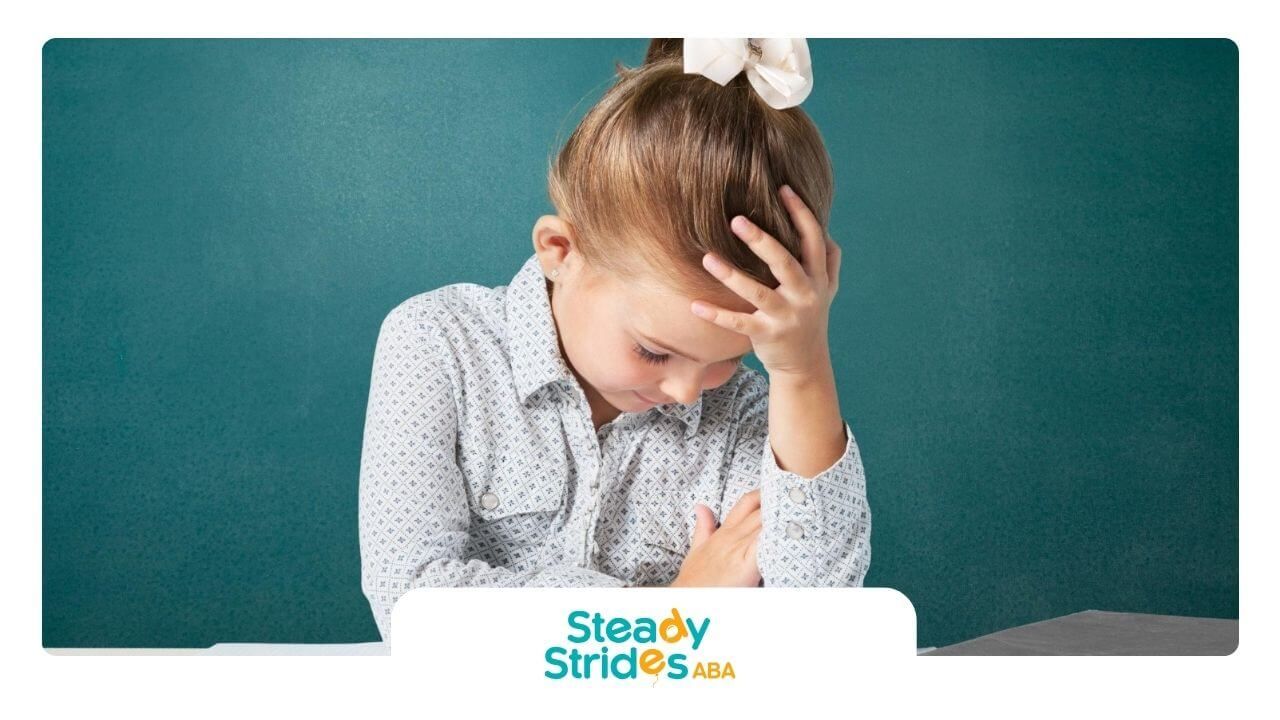Understanding Autistic Teenagers
Understanding the unique experiences and challenges of autistic teenagers is key to implementing effective therapy activities. The two primary areas of difficulty generally seen in autistic teenagers are social difficulties and restricted interests and behaviors.
Social Difficulties
Autistic teenagers often exhibit varying degrees of social difficulties, such as struggling with social cues, maintaining eye contact, or understanding nonverbal communication. These challenges can contribute to feelings of frustration, isolation, and difficulties in social interactions.
Additionally, communication challenges, such as difficulties expressing needs and delayed speech and language development, can exacerbate these issues. Supportive interventions like speech therapy and augmentative and alternative communication (AAC) systems can play a crucial role in enhancing communication skills and promoting independence.
Restricted Interests and Behaviors
Autistic individuals often have restricted interests and engage in repetitive behaviors. These behaviors can range from mild to severe and may interfere with daily activities and social interactions.
Moreover, sensory sensitivities in autistic individuals can lead to behaviors like distress, meltdowns, avoidance, or seeking certain sensations. These sensitivities can significantly impact daily functioning and social interactions, with estimates of prevalence in autistic individuals ranging from 45% to 96%.
Understanding these difficulties is the first step toward helping autistic teenagers navigate their world and thrive. Tailored therapy activities for high-functioning autism can provide opportunities for social interaction, improve communication skills, and help manage restricted interests and behaviors.
Benefits of Therapeutic Activities
Engaging in therapeutic activities can offer various benefits for autistic teenagers, such as sensory exploration, creative expression, and emotional regulation. These activities not only provide a fun experience but also promote crucial skills that can aid in their social and emotional development.
Sensory Exploration
Sensory-based activities focus on stimulating and engaging the senses. Such activities provide a calming and enjoyable experience for autistic teenagers. These activities can help regulate sensory sensitivities and promote self-soothing techniques, which are essential coping strategies for those with autism.
Engaging in these activities allows autistic teenagers to explore different textures, sounds, smells, and visuals in a safe and controlled environment. This exploration can enhance their understanding of the world around them and improve their ability to process sensory information.
Creative Expression
What are coping skills activities for autism? Artistic and creative activities are good choices. These activities provide a platform for self-expression and can help improve communication, social interaction, and emotional well-being.
Art therapy, for instance, offers a creative outlet that allows individuals to express themselves, explore their emotions, and develop important skills. By engaging in such activities, autistic teenagers can communicate their feelings and thoughts in a non-verbal manner, which can be therapeutic and empowering.
Similarly, music therapy is a powerful and beneficial recreational activities for young adults with autism near me. It provides a creative outlet for self-expression and offers numerous therapeutic benefits, such as improved cognitive functioning, reduced anxiety, and enhanced social skills.
Emotional Regulation
Therapeutic activities can also play a significant role in promoting emotional regulation. By participating in structured and enjoyable activities, autistic teenagers can learn to manage their emotions better.
These activities provide opportunities for autistic teenagers to express their feelings in a safe and supportive environment. This can help them develop a better understanding of their emotions, learn how to express them appropriately and develop strategies to manage emotional distress.
In conclusion, therapy activities for autistic teenagers can offer numerous benefits that can enhance their quality of life and promote their overall development. By incorporating these activities into their daily routine, autistic teenagers can explore their senses, express themselves creatively, and regulate their emotions effectively.
Best Therapeutic Activities for Autistic Teenagers
Exploring great activities for autistic teenager near me can offer various benefits, including sensory exploration, creative expression, and emotional regulation. It's crucial to choose activities that align with the teenager's interests and capabilities.
Here, we explore three types of therapy activities for autistic teenagers: sensory-based, artistic and creative, and physical activities.
Sensory-Based Activities
Sensory-based activities focus on stimulating and engaging the senses to provide a calming and enjoyable experience for autistic teenagers. These activities can help regulate sensory sensitivities and promote self-soothing techniques. Examples of sensory-based activities include:
- Playing with sensory toys, such as fidget spinners, stress balls, or sensory bins filled with different materials.
- Exploring nature, such as walking barefoot in the grass, listening to the sounds of birds, or smelling different flowers.
- Participating in water activities, such as swimming or playing with water balloons.
These activities can be tailored to the teenager's specific sensory needs and preferences, providing a personalized experience that can contribute to their overall well-being.
Artistic and Creative Activities
Artistic and creative activities can be highly beneficial for autistic teenagers, allowing them to express themselves, develop their skills, and engage in enjoyable experiences. These activities provide a platform for self-expression and can help improve communication, social interaction, and emotional well-being.
Examples of artistic and creative activities include:
- Drawing or painting to express emotions or ideas.
- Participating in music therapy, where they can learn to play an instrument or engage in singing.
- Engaging in art therapy is a beneficial recreational activity that provides a creative outlet for individuals to express themselves, explore their emotions, and develop important skills.
Physical Activities
Engaging in physical activities can have numerous benefits for autistic teenagers, including improved physical fitness, enhanced social skills, and reduced stress and anxiety. Physical activities can range from individual exercises to team sports, depending on the teenager's comfort level and preferences.
Examples of physical activities include:
- Participating in yoga or mindfulness exercises can help improve flexibility and stress management.
- Playing team sports, such as soccer or basketball, can enhance social skills and teamwork.
- Engaging in individual sports, such as running or swimming, can improve physical fitness and provide a sense of accomplishment.
Choosing the right
therapeutic activities can play a crucial role in the development and well-being of autistic teenagers. By exploring sensory-based, artistic creative, and physical activities, parents can provide their teenagers with a range of enjoyable and beneficial experiences.
Specific Therapy Activities
To support autistic teenagers in their growth and development, engaging in specific therapy activities can be immensely beneficial. Such activities provide opportunities for self-expression, skill development, and fun. Here, we explore the benefits of art therapy, music therapy, and outdoor adventures.
Art Therapy
Art therapy can serve as an excellent recreational activity for autistic teenagers, providing a creative outlet that allows them to express themselves, explore their emotions, and develop important skills.
Through painting, drawing, sculpting, or other art forms, teenagers can communicate their thoughts and feelings in a non-verbal manner. This can be particularly beneficial for those who face challenges with verbal communication. Moreover, art therapy can enhance motor skills, improve focus and attention, and provide a sense of accomplishment.
Some art therapy activities for autistic teenagers might include:
- Creating a self-portrait to express personal identity
- Designing a comic strip to tell a story or share an experience
- Crafting a collage using different materials for sensory exploration
Music Therapy
Music therapy is another powerful and beneficial recreational activity for autistic teenagers. It is one of the best indoor activities for autistic adults. It provides a creative outlet for self-expression and offers numerous therapeutic benefits.
Autistic teenagers can engage with music in various ways, such as by playing an instrument, singing, dancing, or even listening to different types of music. Music therapy can improve social skills, emotional regulation, and motor coordination. It can also provide a calming and soothing experience for individuals who may have sensory sensitivities.
Some music therapy activities for autistic teenagers might include:
- Playing a musical instrument to improve coordination and focus
- Singing songs to enhance speech and language skills
- Listening to calming music to promote relaxation and stress relief
Outdoor Adventures
Engaging in outdoor adventures can be an enriching and enjoyable experience for autistic teenagers. These activities provide them with opportunities to explore their surroundings, connect with nature, and develop various skills (ABT Behavioral Analysis & Therapy).
Outdoor adventures can include activities such as hiking, gardening, bird watching, or simply playing in a park. These activities can enhance physical fitness, improve sensory processing, and promote a connection with the natural environment.
Some outdoor adventure activities for autistic teenagers might include:
- Participating in a nature scavenger hunt to enhance observational skills
- Gardening to promote sensory exploration and responsibility
- Hiking or walking in nature to improve physical fitness and reduce stress
In conclusion, these therapy activities for autistic teenagers can provide a multitude of benefits, from improved communication and social skills to enhanced emotional regulation and sensory processing. By exploring different types of activities, parents can find the ones that best suit their teenager's interests and needs, fostering their growth and development in a fun and engaging manner.
Social Engagement Activities
Engaging in social activities is an essential part of any teenager's development and growth. For autistic teenagers, these activities can offer numerous benefits, including fostering social skills, promoting physical health, and providing a sense of belonging.
This section explores the benefits of sports and team games, as well as social clubs and group activities as therapy activities for autistic teenagers.
Sports and Team Games
Involvement in sports and team games can offer a plethora of benefits for autistic teenagers. According to ABT Behavioral Analysis & Therapy, sports and games promote physical health, encourage social interaction, aid in skill development, and foster a sense of belonging.
Moreover, these activities can lead to improved physical fitness, enhanced social skills, and reduced stress and anxiety. These benefits are crucial in managing autism and helping the teenager to grow and thrive.
When choosing a sport or team game, it's important to consider the preferences and abilities of the teenager. Some might prefer individual sports like swimming or running, while others might thrive in team environments like soccer or basketball.
Social Clubs and Group Activities
Joining social clubs and participating in group activities provide numerous benefits for autistic teenagers. These activities create opportunities for social interaction, skill development, and a sense of belonging.
Social clubs and group activities can range from drama clubs and art classes to volunteering in community services. These activities can improve social interaction and create a sense of community.
The key to choosing the right club or group activity lies in understanding the teenager's interests. If they have a passion for a particular subject, finding a club or group activity that aligns with that interest can make the experience more enjoyable and beneficial.
In conclusion, engaging in sports, team games, social clubs, and group activities can significantly benefit autistic teenagers. The social interaction and sense of belonging they provide can help manage autism and enhance the teenager's overall quality of life. It's essential to choose activities that align with the teenager's interests and abilities to ensure they feel comfortable and engaged.
Tailoring Therapy Activities
While sensory activities have proven beneficial in catering to the unique needs of autistic teenagers, these activities must be tailored to suit the individual's specific needs and interests. A one-size-fits-all approach may not yield the desired outcomes, making customization an integral part of therapy planning.
Individual Needs and Interests
Every teenager on the autism spectrum is unique, with specific sensory preferences and aversions. As such, therapy activities should be customized to match these personal needs and interests. For example, a teenager who is hypersensitive to touch may benefit from activities involving different textures that can help them gradually acclimate to new sensations.
The choice of sensory activities should also align with the teenager's interests. A teenager with a keen interest in music, for instance, may respond well to homemade musical instruments. Engaging in activities that resonate with their interests can increase their willingness to participate and their overall enjoyment.
Understanding the individual's sensory profile – their likes, dislikes, and triggers – can guide the selection of appropriate therapy activities. Regular observations and interactions with the teenager can provide valuable insights into their sensory preferences, facilitating the tailoring of suitable activities.
Supportive Environment for Thriving
Creating a supportive environment is key to the success of sensory activities for autistic teenagers. The environment should be sensory-rich, yet controlled, to avoid overwhelming the teenager.
A supportive environment can include calming sensory spaces designed for relaxation and self-soothing. These spaces could incorporate elements such as soft lighting, gentle sounds, and comfortable seating – tailored to the teenager's sensory preferences.
The environment should also foster exploration and learning. This can be achieved by introducing a variety of sensory experiences in a safe and controlled manner. Regular changes to the environment can also help to keep the teenager engaged and interested.
Incorporating sensory activities into daily routines can provide consistency and predictability, which can be comforting for autistic teenagers. This can also provide opportunities for them to practice and improve their sensory integration skills in a familiar and supportive environment.
Conclusion
Finding the right therapeutic activities can significantly enhance your autistic teenager's well-being and development. Remember, the key is to personalize their experience by incorporating their sensory preferences, interests, and goals. By incorporating a variety of sensory, creative, and physical activities, you can create a well-rounded therapeutic approach that fosters growth and enjoyment.
Empowering Your Autistic Teenager with ABA Therapy
While these activities offer a great starting point, for comprehensive support, consider ABA therapy. At
Steady Strides ABA, we provide top-tier ABA therapy services across Texas. Our team of qualified professionals creates individualized programs specifically designed to address your teenager's unique needs.
We utilize evidence-based strategies to enhance communication skills, reduce challenging behaviors, and promote social interaction, all within a safe and supportive environment.
Contact Steady Strides ABA today and see how we can help your teenager reach their full potential.













